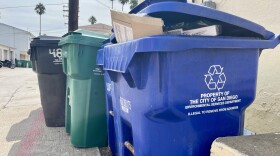The scenes out of Texas are just about as close to incomprehensible as you can get: Water rising so fast, that destruction and death were sure to follow. For former San Diego National Weather Service Meteorologist Alex Tardy, it was all way too familiar.
“The closer I looked at the data in Texas, in Kerrville, they had two and a half inches of rain in one hour. They had five inches of rain in three hours. That’s almost identical to what we saw in San Diego in Chollas Creek that caused all that major flooding in the San Diego region. So meteorologically, it was quite similar,” Tardy said.
But Tardy said there were also important differences. The rain in San Diego ended after a few hours on January 22, 2024.

The rain in Texas, in the early morning of July 4, in hilly terrain, kept pouring for hours on end.
The tragedy in Texas has brought back some terrible memories for a group of San Diegans, specifically many who lived along the Chollas Creek flood channel, which is once again filled with dirt, rocks and overgrown vegetation.
“It’s really traumatizing because you’re essentially reliving your experience,” said Jessica Calix, whose Southcrest apartment. just feet from Chollas Creek, was flooded in 2024.
“It’s really hard when you haven’t experienced this kind of disaster to put yourself in other people's shoes, but we can. And so we know how horrific it is ... You know, I’m living in a travel trailer, and I see that whole trailer park got washed away full of families, and so it’s extremely traumatic to witness,” Calix said.
The National Weather Service in Texas said warnings were issued for the flooded area. But it was the middle of the night, and cell service in the area is said to be spotty.
So, how well are we prepared here should devastating floods hit again? Jessica Calix told us that she didn’t get any warnings.
But local National Weather Service Meteorologist Jon Suk said warnings were issued here and he says should we find ourselves in a similar situation again, the Weather Service is prepared.
But he also said the public must also be prepared to receive emergency messages.
“That’s going to be through partners like KPBS, going onto websites like the National Weather Service, weather.gov … Most weather apps also have the push on all watches, things like that. When you get warnings, that’s when we start to talk about direct threat to life and property,” Suk said.
Alex Tardy agreed with Suk about our level of preparedness when it comes to warnings. Still, Tardy said, “There’s always room for improvement because these disasters, they’re gonna catch you off guard somewhere.”







